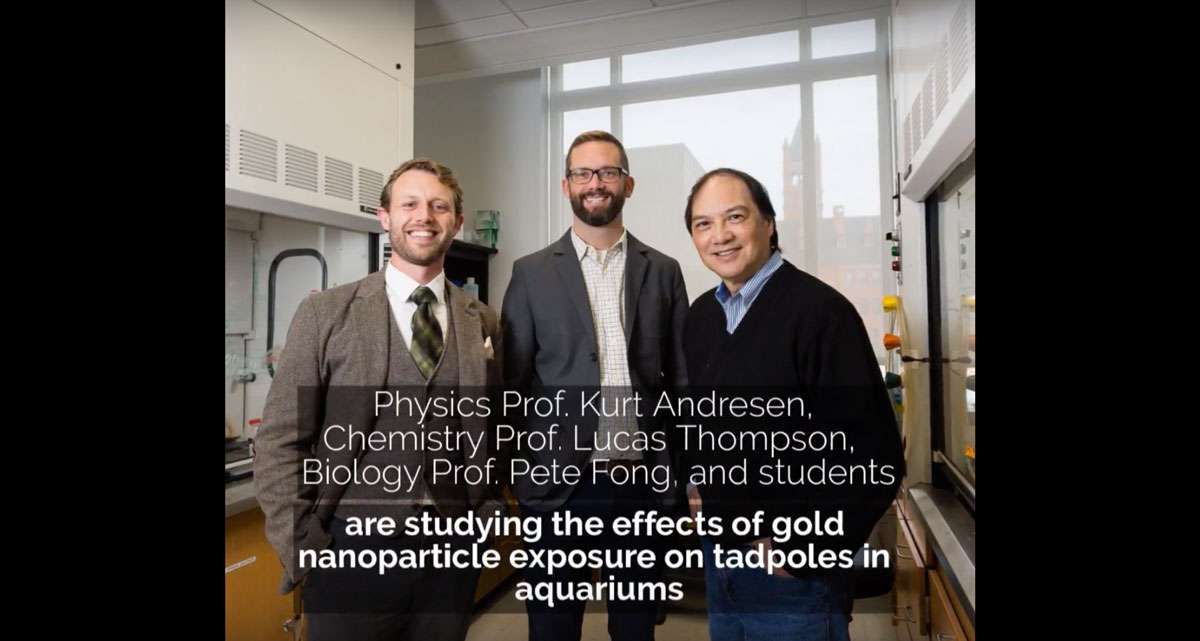
The passion for knowledge extends beyond the classroom at Gettysburg College. Recently, faculty and students across scientific disciplines, in biology, physics, and chemistry, collaborated on a study to analyze the effect of nanoparticles on aquatic life.
Their research was recently published in Environmental Toxicology and Chemistry. Andrea Sitton ’14, Taylor Bury ’16, Laura Lee ’15, and Kevin Lerner ’17 are listed as coauthors.
Gold nanoparticles have become more present in the environment as they are increasingly used in everyday objects and technology. For example, gold nanoparticles have been used in cancer therapies to treat head, neck, and throat cancers; nanoparticles are also increasingly used as an antibacterial agent in clothing and food.
Watch the short video to learn more about the research:

Each professor brought his own expertise to the project: Chemistry Prof. Lucas Thompson can make gold nanoparticles, Biology Prof. Pete Fong has an extensive knowledge of tadpoles, and Physics Prof. Kurt Andresen can measure the concentration of gold in nanoparticles. In the lab, Fong reared the tadpoles to adulthood with the help of Bury. These tadpoles digested the gold nanoparticles, which Thompson had made with the help of Sitton and Lerner.
“This project wouldn’t have been completed without the efforts of our students,” said Thompson.
Over a period of time, Andresen measured the gold nanoparticles in the tadpoles to see if they were still present in their system with the help of Lee and Lerner. After placing the tadpoles in clean water, the scientists discovered that most of the nanoparticles were gone. They concluded that, in this instance, gold nanoparticles may not be classified as long-term toxicant materials.
The answers that have emerged from this experiment have raised new questions. Building upon their current research, Thompson, Fong, and Andresen are now focusing on the drug Prozac with the help of Richard Gawel ’18. Research shows Prozac has a significant impact on aquatic life because it comes out in wastewater treatment, but they do not know its level of toxicity. The lab will attempt to answer this question by pairing the drug molecule to the gold nanoparticle.
Overall, Thompson said projects like these inspire student growth. “This is an opportunity that benefits the student because they have an exposure to these interdisciplinary-type projects,” he said. “We are in an environment here that fosters these interdisciplinary activities through programs like X-SIG.”


